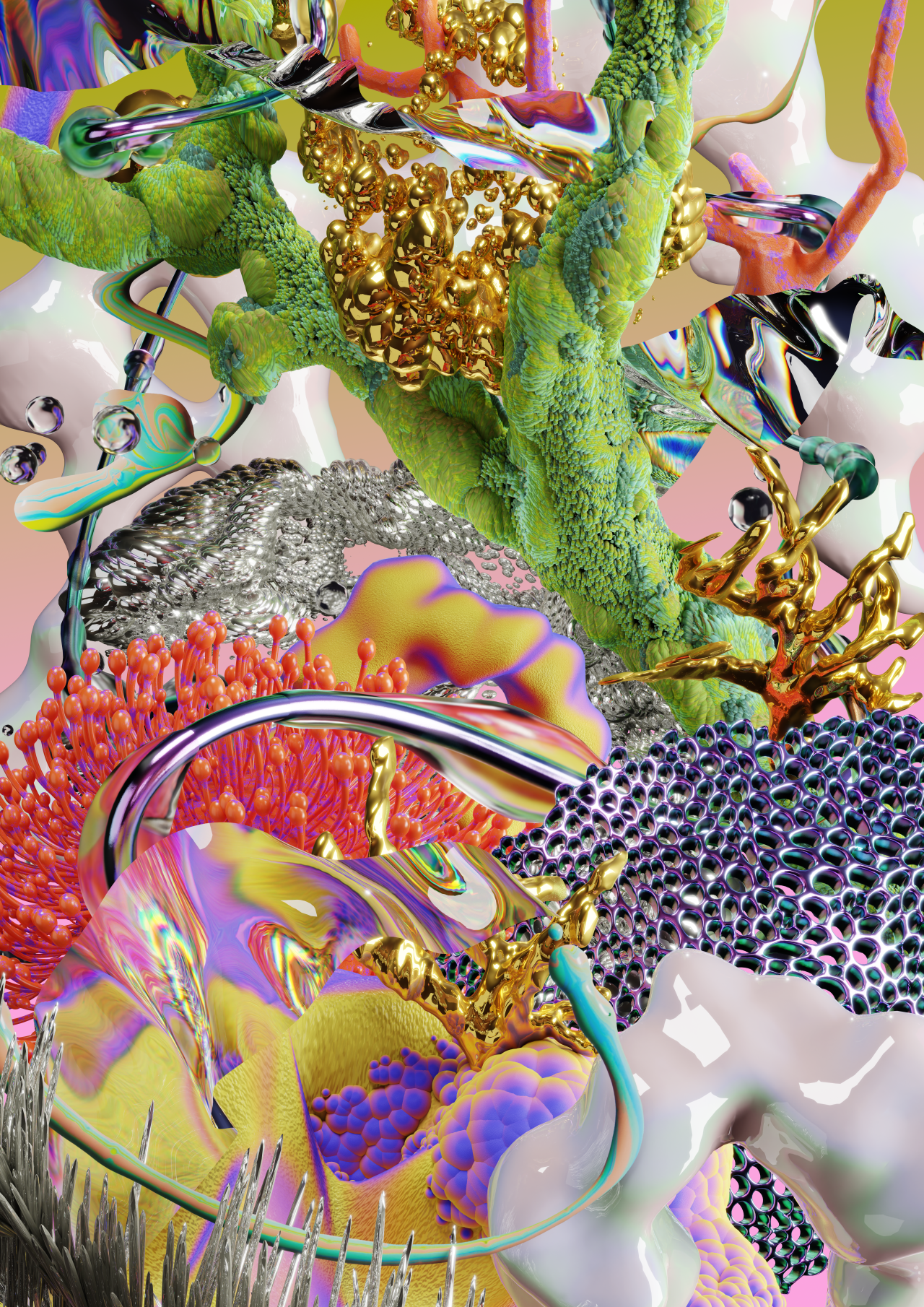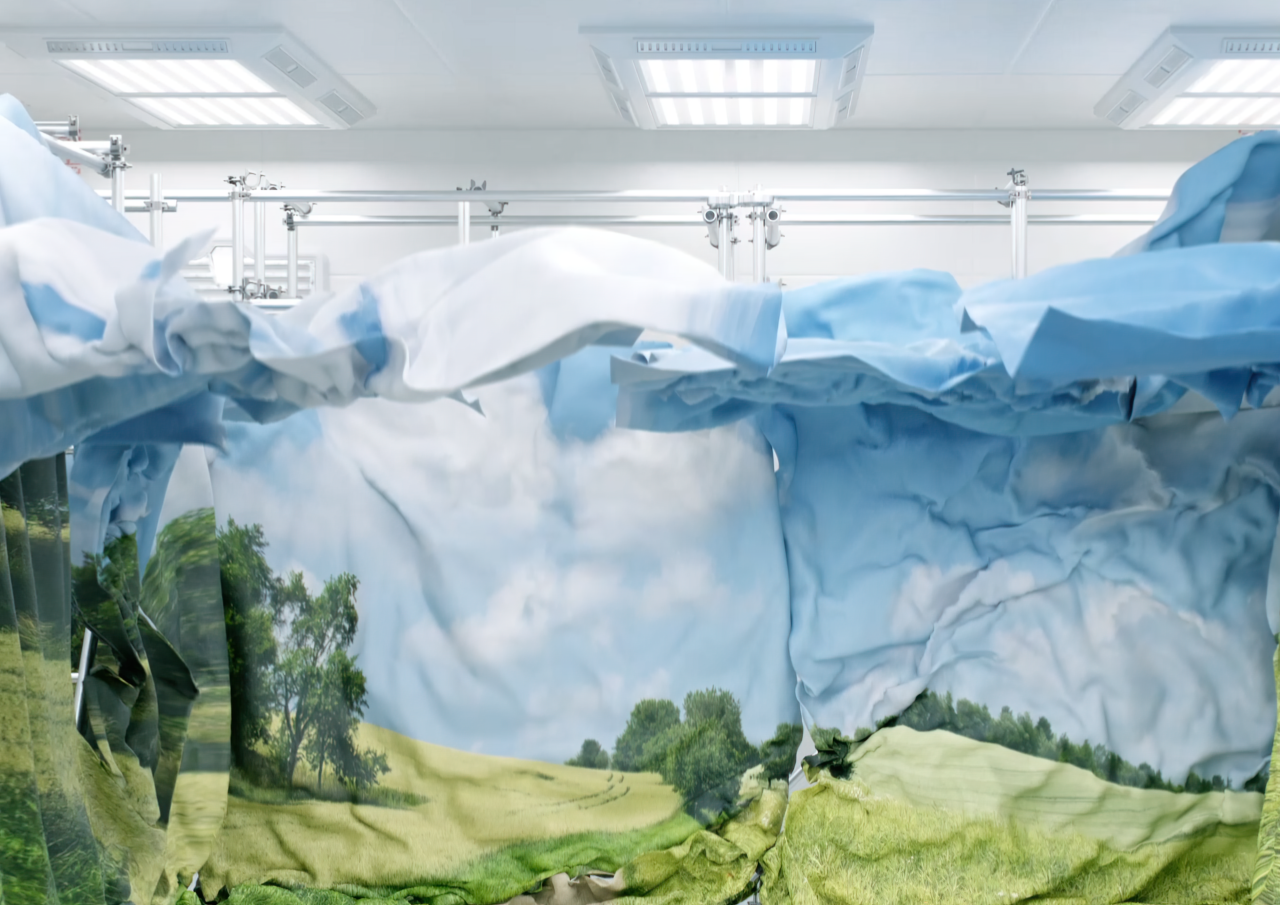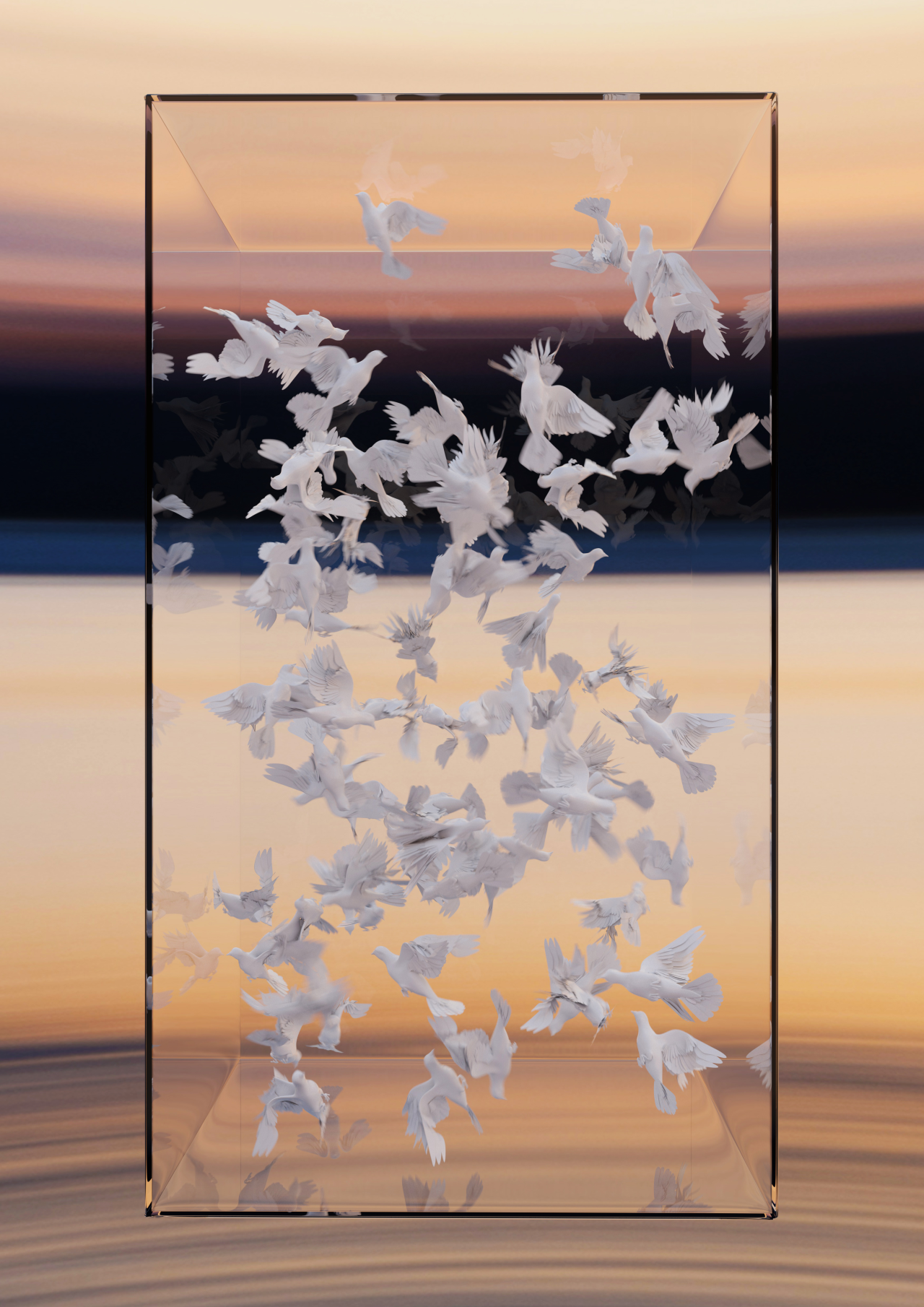“For young people, by young people”, Bao Yao Fei talks us through A Digital Nature, on display at the Design Museum Den Bosch

SeaBottom by ALANKONUOTIO
It’s time to give credit where it’s due, and recognise that young generations are, too, at the forefront of creative thinking and innovation. Bao Yao Fei, who is part of the Young Design Team at Design Museum Den Bosch, knows it best. Curating meaningful projects that destroy traditional hierarchies within artistic spaces, Fei introduces A Digital Nature in collaboration with DEMO – an exhibition exploring what it means to co-exist with nature today. All digitally designed, alternative narratives surrounding natural environments find a home in larger-than-life digital screens. The goal is to prompt questions and encourage multiple perspectives, as topics of connection to nature, climate crisis and the efforts to fight it are approached with wit and a breath of fresh air. Integrating the digital landscapes into natural biodiversity, is the new generation overturning the laws of nature? We’re on our way to find out.
To start off, maybe you could tell me a bit about your role at the Design Museum Den Bosch?
I’m the Young Design Curator of Exhibitions, which means I make exhibitions with a different mindset. I have to think about what young people want to see, by looking at design from a diverse, inclusive perspective. It’s about multifocal ways of showing design, making exhibitions for young people, by young people, and with more urgency. Museums in general have these conservative feelings, for a lot of people it seems very classical. The Design Museum Den Bosch has broken with that idea.
It’s about exhibitions that everyone can enjoy in the end.
Exactly! We also have a space called ‘Young Design Space’ that is free for all. You don’t need a ticket or anything, you can just come in and see the exhibitions on the ground floor.
I think this is so great. Even when hearing the word ‘museum’, there is an association of it being a very intimidating space. A very ‘high-culture-only’ space.
Most people do think that, and there is this high threshold created by the unwritten rules of a museum. But also the entry price and the subjects that are shown – it can all be very self-referential and highbrow. There are many difficult and counterproductive visions of what a museum is. Art and design and culture are made by everyone, not just the top layer. Art history, or what’s been written about it, has always been about that top layer. White, Western, privileged art history.
So, it’s about taking a more intersectional view on art as opposed to a traditional one?
Yeah, also because it’s connected with design. Design is such a big part of our lives. Usually, design museums just show objects by designers. We try to show a different perspective. It’s also about what happens between the designed object and its user, what kind of influence they have on each other in their social environment. It’s this paradigm, called production-consumption-mediation paradigm. Talking about design is also making the design, and using the design is also collaborating with the designer. We try to show many aspects of what a designed object can be.
Relating specifically to “A Digital Nature“, how does that fit in with these goals?
That’s an interesting one. It’s a collaboration with the museum and DEMO, a motion design festival. Together with Studio Dumbar, a huge design company, DEMO took over 5000 screens normally showing commercials in public places in The Netherlands and showcased the best motion design from artists around the world for 24 hours.
For the collaboration between DEMO and Design Museum Den Bosch, they gave me all the digitally designed motion they received for the festival. There were so many designers making digital nature, and I thought, why do they, when you can just go outside and see nature? Are we going into the future of a metaverse, living more in a digital environment? Is that why there is a need for additional nature? We show 16 different digitally designed natures and we want people to ask what impact it has on our lives at this moment. During covid, there were many universities doing scientific research on what happens if people don’t spend time in nature. Turns out, digital nature has the same effect of rest and happy hormones and whatnot as the physical nature does. It’s crazy! It feels like something you don’t really want to know.
Wow, it’s such a big number — it makes you realise how many screens you consume in a day. And that there are always amazing ways to utilise them…
There was this test during one of the lockdowns with people who lived in care homes and weren’t allowed to go outside because of the health risks. Video footage of nature was shown to these people with VR. When you go outside and see tree leaves move in the wind, water ripple or even a plastic bag swept away, your mind goes into a complete state of relaxation. It allows you to zone out. The VR version of nature had the same effect!
Like meditation, almost.
Yeah, you get into this space where you can think freely. Be in peace. This apparently can also be done in a digital way.
It is crazy. When reading about the exhibition, it was more of a theoretical link between the digital and the physical. I don’t know if these boundaries exist anymore. But to hear there is so little separation is fascinating. And scary!
That’s the thing. We also designed the space like it’s still outside. We took street furniture like trashcans and benches. We also took the DOOH (Digital Out of Home) screens from the outside and put them inside the museum building, showing digital things that are physically outside on digital screens as well. Very meta, haha. There is this cynical edge to it sometimes as well. In the space, there is this dying plant and there is also an old factory component in the exhibition of artificial smells of nature. So, there are multiple layers of cynicism towards the way we create nature.
I guess there is also a layer of humour.
When I was doing this, I thought just being cold and direct about the subject wouldn’t be the right tone of voice. Because we know it already, we see it on the news all the time. I wanted to give it some lightness.
I can definitely see that. I don’t think anyone knows about the climate crisis more than young people – it affects them the most. So why do we keep pushing these heavy topics and putting the blame on younger generations? It’s now about bringing another level of lightness to it, which is just respectful.
Exactly. You get so much negativity about everything. I try to give that a bit of a twist. So we keep talking about these subjects, without directly getting depressed.

‘Printed Nature’ by Anjelina Toros
And also opening new ways to talk about it. I hear so many people within my sphere say they can’t bear to listen to the news anymore, so then they’re missing out on that discourse. But if we do it in this way as opposed to the highly negative way, it will actually make people engage in the discourse more.
Yeah, museums in general often do exhibitions like that. Cerebral and highbrow. You have to find ways to work around that. So It’s amazing that I work at a museum which dares to take a stand and that I could put up this exhibition.
It’s very exciting! We kind of powered through most of my questions, but maybe you could tell me about some pieces specifically? I really liked ‘Printed Nature’.
Yeah, by Angelina Toros. It’s a part of her larger series. It’s about nature, of course, but also the symbiosis between manmade nature and real nature. With a bit of irony as well. As I say in the exhibition text, ‘we’re trying to save the planet by using paper straws.’ But why do we even need straws? People are thinking of making ice for the North Pole. Just why? So, I think this is also a reaction to these geo-engineering ways of helping the planet. I think it’s also the sub-layer in her work. It’s so perfectly simple. You see the picture of nature, and then the screen drops, and you see it printed on a piece of fabric. It’s very meta-meta-meta in the context of this exhibition

Peace Does Not Equal Freedom by Timo Lenzen
Yeah, there are so many layers to every piece. Also, what I think is also perfect for our times is ‘Peace Does Not Equal Freedom.’
You see these birds flying in this cube – they’re white doves, the peace birds. But they’re not even flapping their wings, they bounce around. They’re still in a cage. I was reading this book, it was about egotism but in a positive way. When you’re egotistical, you’re a very pure because you don’t think about what other people think or want. I think it’s interesting because when we consume media and different concepts, a lot of people think about only one way of perceiving it. But our generation has more than just one opinion, we have different way of thinking about something. What does peace mean? For some, it’s arriving home to their peaceful bubble. For others, it’s about world peace.
I think our generation doesn’t live with any binaries, nothing is Black and White anymore. Everything lives within the grey space. My final question is what are some of the main hopes for people to take away after the exhibition?
I hope they take some time , take the work in them and recognise things in it. As we said, these are the subjects we already know, but it’s another layer/way of looking at them. Also, to think about how we consume nature. It is something we consume daily and now we can also do it digitally. I hope they see that it’s not all negative. Things can also be seen it in a positive way.
On view until JAN 9th @ Design Museum Den Bosch
More info about the exhibition here!
All images courtesy of Design Museum Den Bosch
Notifications